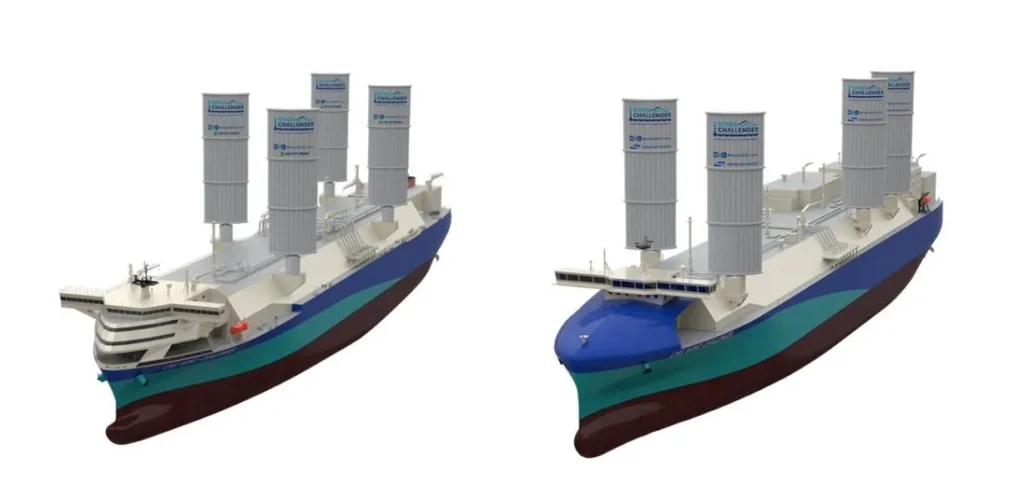MOL Secures Approval for Wind-Powered LNG Carriers
Mitsui O.S.K. Lines, Ltd. (MOL) has received approval for two groundbreaking membrane-type LNG carrier designs featuring Wind Challenger propulsion systems. This development marks a significant step towards sustainable and efficient shipping practices.
Disclaimer
The editors of Windassist report news, even if it contains potentially exaggerated claims about emission and fuel reductions. The editoris take a critical approach to this and advise readers to do the same. The editors distance themselves from unproven claims, but also realize that every step towards sustainable shipping, no matter how small, deserves recognition.
MOL obtains approval in principle from Lloyd’s Register for new LNG carrier designs incorporating Wind Challenger technology. The collaboration with Hyundai Heavy Industries and Samsung Heavy Industries leads to enhanced fuel efficiency and reduced emissions.
Commitment to Sustainable Shipping
MOL’s dedication to achieving net zero greenhouse gas emissions by 2050 drives the adoption of innovative technologies like Wind Challenger. The company’s ambitious goal includes installing these systems on 25 vessels by 2030 and 80 vessels by 2035.
MOL’s recent approval for revolutionary LNG carrier designs featuring Wind Challenger propulsion systems showcases the company’s commitment to sustainability and cutting-edge technology. The collaboration with industry leaders Hyundai Heavy Industries and Samsung Heavy Industries has resulted in vessels designed for optimal fuel efficiency and reduced emissions.
Innovative Designs for Enhanced Fuel Efficiency
MOL is partnering with HD Hyundai Heavy Industries and Samsung Heavy Industries, alongside Lloyd’s Register, to create advanced designs for LNG carriers. These new vessels are projected to achieve fuel savings of up to 30 percent per voyage and 15 to 20 percent annually. The latest designs feature four rigid sails, a significant upgrade from the previous two-sail configuration. This change is made possible by relocating the bridge towards the bow of the vessel, allowing for optimal sail placement and maximizing fuel efficiency.
The new vessels will measure between 938 feet (287 meters) and 951 feet (290 meters) in length, with a capacity of 174,000 cubic meters (cbm). The innovative sail system, known as the Wind Challenger, is designed for automatic extension, retraction, and rotation. The first installation on the coal carrier Shofu Maru demonstrated promising results, achieving a reduction in daily fuel consumption by up to 17 percent, translating to an average of 5 to 8 percent savings per voyage during its initial trips to Japan from Australia, Indonesia, and North America.
Safety Assessments and Approvals for New Designs
MOL has conducted comprehensive risk assessments for the new vessel designs in collaboration with shipyards, classification societies, and flag states. These assessments addressed various factors, including sail arrangement, visibility impact, emergency operation procedures, and other safety measures. Safety evaluations were also performed in partnership with the relevant flag states to ensure compliance with maritime safety standards.
The new vessel designs have received Approval in Principle (AiP) from the Marshall Islands for the design developed with HD Hyundai Heavy Industries, while the design created with Samsung Heavy Industries has been approved by Liberia. With these approvals secured, MOL is now progressing to detailed design work for the actual construction of these innovative vessels, marking a significant step forward in the company’s commitment to sustainable shipping practices.
Source: Yukta Sharma at Nauticalvoice.com.
Image: MOL.


